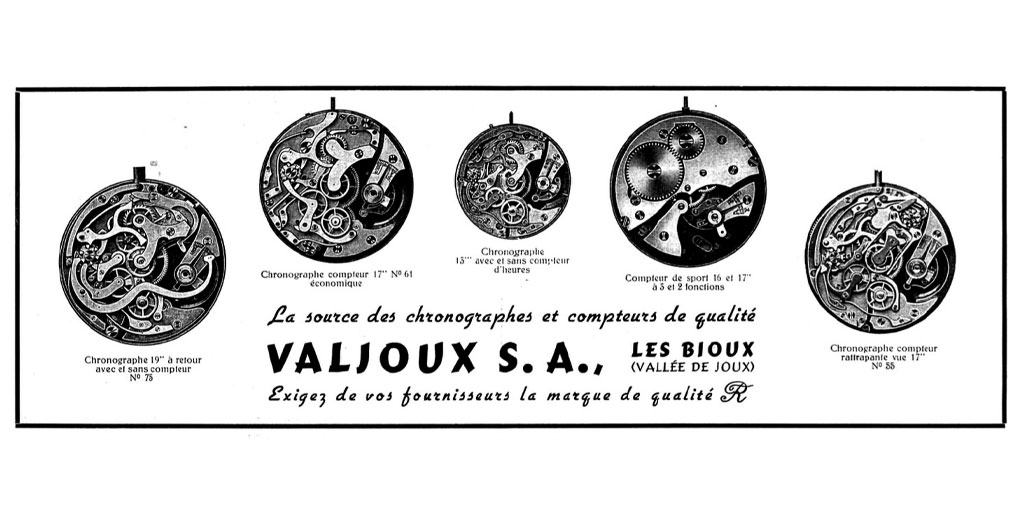For most serious Patek Philippe collectors, a holy grail or ultimate watch to own would be a ref. 1518 or 2499. These two legendary perpetual chronographs can sell for millions of dollars, and many collectors would sell every timepiece in their collection to just to own one piece. Why? Rarity is the obvious reason for their value, but real demand is to own one of the world’s most refined and beautiful watches, a true thoroughbred Patek Philippe. Let’s look back at where these iconic masterpieces came from and how Valjoux made its own mark in horological history.

Founded in 1901 by brothers John and Charles Reymond in Les Bioux, the company operated under the name ‘Reymond Frères SA’ until 1929 when it became known as ‘Valjoux SA’ (short for Vallée de Joux). Specializing in chronograph movements, caliber 22 debuted in 1914 and remained in production for sixty years. However, it was the smaller, 13 ligne caliber 23 developed in 1916 that changed the world of wrist chronographs, finding its way into chronographs for Patek Philppe, Audemars Piguet, Rolex and Vacheron. Production of this ébauche lasted for sixty years until 1974. It is estimated that 125,000 ébauche movements of this type were made, although relatively few were reworked by Patek Philippe for its chronograph production.

By 1923, the Reymond brothers were also producing finished movements in addition to ébauches. Today, the company is owned by the Swatch Group and is part of ETA, and still produces the classic Valjoux 7750 chronograph movement (now called ETA 7750) used by brands such as IWC, Omega, Breitling, TAG Heuer and Chronoswiss. In addition, Valjoux also supplied the movement for early Rolex Daytonas such as 6263.
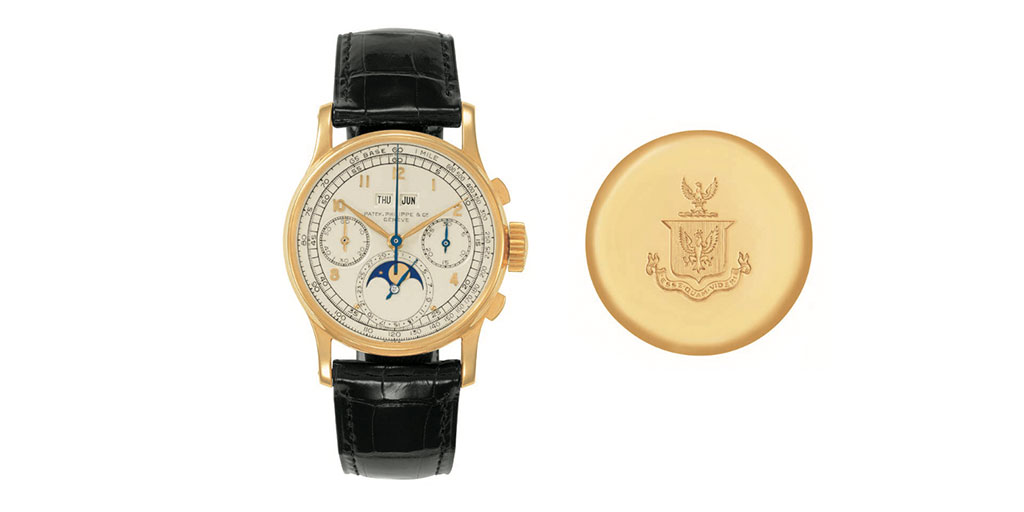
The chronograph has always played a pivotal role in Patek Philippe’s portfolio of innovations, thanks in part to its early chronograph ébauche partner, Victorin Piguet who helped the company master additional chrono functions such as the split-seconds and fly-back. After the First World War, Patek’s sophisticated clients started to request chronograph wristwatches and in 1924 Victorin Piguet helped Patek introduce the first chronograph wristwatches. These were made in very limited quantities and the few remaining examples are considered one-of-a-kind, several of which can be seen in the Patek Philippe Museum. However, during the 1930s, Patek saw demand for chronograph wristwatches increase, especially in the USA. It was at this time, that the company’s new owner, Charles and Jean Stern realized the opportunity to produce wrist chronographs in series. To do this, the brothers partnered with the chronograph specialist Valjoux. Under the direction of Patek Philippe’s new technical director Jean Pfister, the company decided to use Valjoux’s 13 ligne column-wheel caliber 23V that premiered in 1916. The whole mechanism was totally reworked and upgraded in compliance with Patek’s exacting standards. The watchmakers suspended the escape, fourth and driving wheels beneath separate cocks. The index pointer was secured with an elegant swan’s neck spring, the chrono bridge was reshaped and the column wheel crowned with the typical Patek cap. Not unexpectedly, the entire clutch lever was totally redesigned, and its pivot point shifted for concentricity with the fourth wheel arbor.
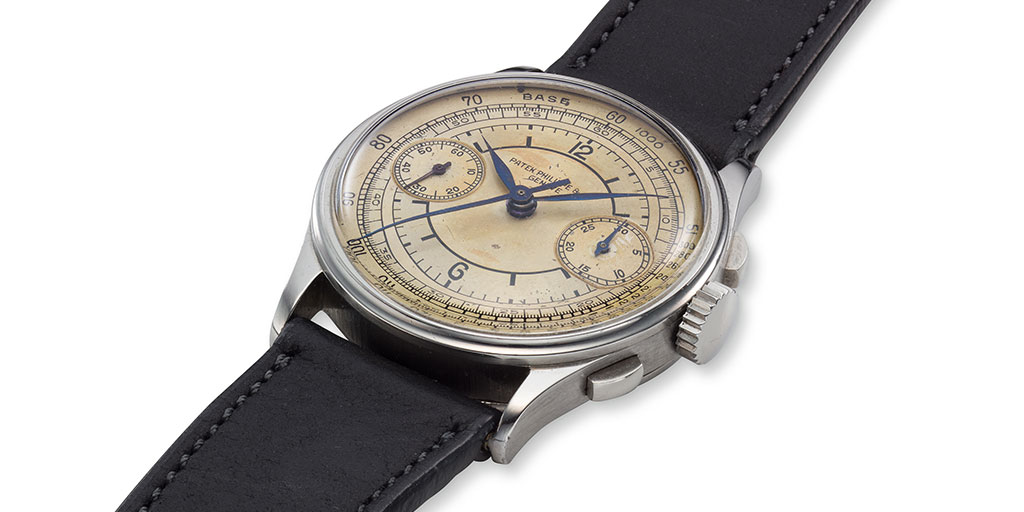
On September 8, 1934, the legendary ref. 130 was born using this exquisite movement, adjusted for a chronograph, and it became an indispensable element of Patek Philippe’s caliber repertoire. Earlier chronograph versions of the ref. 130 had been made since 1927 utilizing both the Victorin Piguet ébauche and occasionally the 12 ligne LeCoultre ébauche. However, it was the 1934 ref. 130 version using the Valjoux 13-130 base that went on to become various important chronographs.
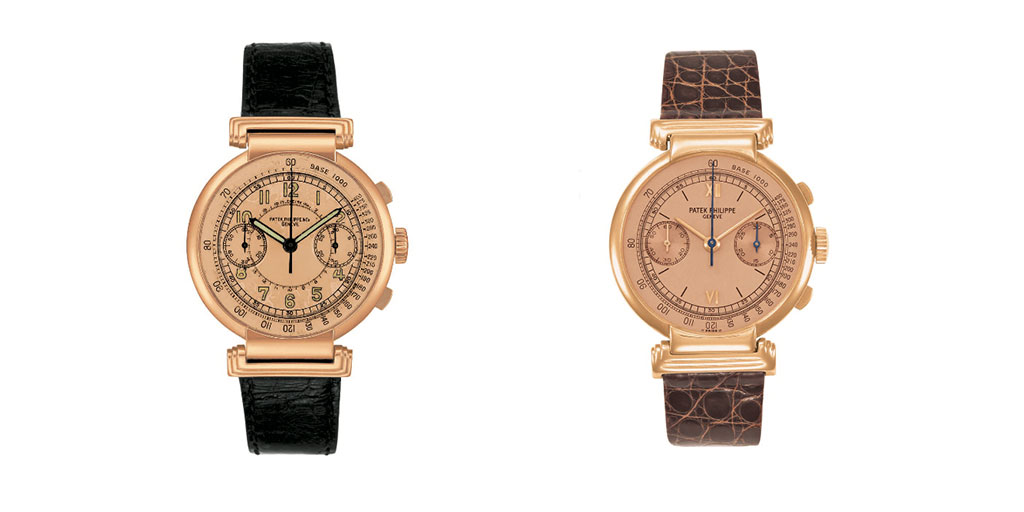
In 1937, the larger chronograph ref. 530 was introduced, and later in the same year, the ref. 533 with its flatter bezel was launched; the water-resistant chronograph, ref. 1563 was launched in 1946; the rarer ref. 1506 with its distinctive straight lugs was only produced from 1941 – 1943; the unusual and extremely rare ref. 1554 was produced in 1942 with removable lugs (above), as was the unicorn ref. 1561/1 with its pretty butterfly-shaped lugs; in 1943, the ref. 1579 with pulsometer its distinctive spider lugs was launched and remained in production until 1964.
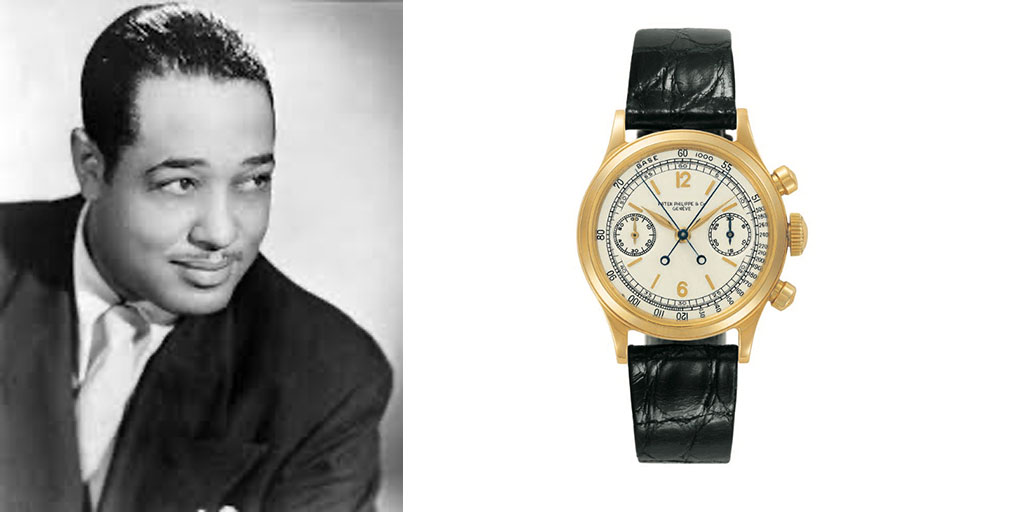
The first wristwatch with split seconds chronograph was made in 1923 by Patek Philippe using a 12 ligne, extra flat Victorin Piguet ébauche. It was not until 1938 and the launch of the ref. 1436 that Patek’s first series production split-seconds chronograph began, remaining in the collection until 1971. With only around 140 pieces made during the three decades of production, the ref. 1436 with its 13-130 caliber made from a Valjoux ébauche remains one of the most desired Patek Philippe complicated wristwatches.

In 1940, the Valjoux ébauche could be found enriching Louis Cottier’s ingenious World Time with a chronograph function in the unique ref. 1415/1 (above).

The ref. 1451/1 was followed in 1941 by another landmark in Patek’s history, the ref. 1518, the first perpetual calendar chronograph made in series that would become the classic expression of Patek’s chronographs. Philippe Stern described the ref. 1518 as one of the most important, mid-century Pateks in part because it established the dial architecture of the day and month dials at the top of the dial, the two chronograph sub-dials at 3 and 9 o’clock, and the moon-phase at 6 o’clock. A decade later, the ref. 2499 (above movement detail) replaced the ref. 1518. The ref. 2499 was made in four series until 1985 when Patek finally exhausted its stock of the Valjoux 23 VZ.
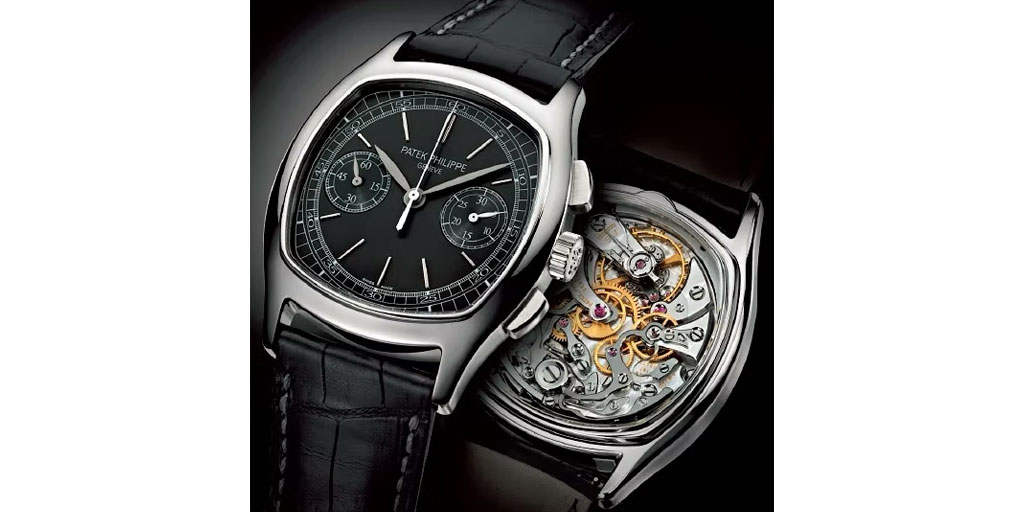
Actual production of Valjoux’s contribution to some of the most iconic chronograph watches ever produced, ceased a decade earlier in 1974 when it reluctantly discontinued the production of the classic chronograph ébauche. Stocks lasted until 1982 when the proud history of the Valjoux 23 VZ came to an end. (Remaining Valjoux blanks were integrated only into the ref. 2499 until 1985.) Now it was Philippe Stern, Charles Stern’s grandson time to make his mark and find a worthy successor to Patek Philippe’s legendary chronograph series. Once again, a new purveyor was found in the Vallée de Joux: Nouvelle Lemania, a neighboring workshop to Valjoux and a new era chronograph era began.

